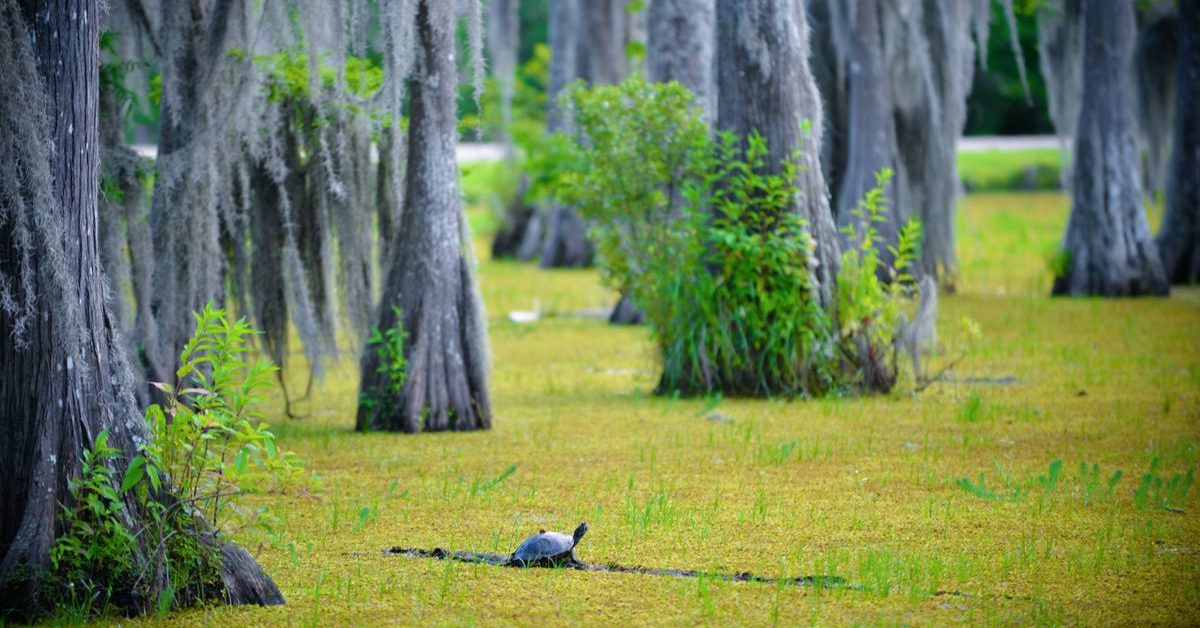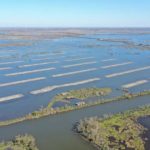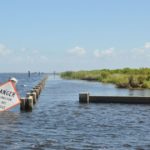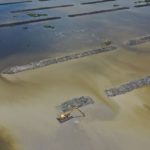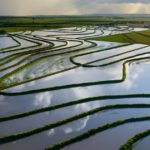Climate action is sometimes subdivided into two categories: mitigation and adaptation. Mitigation is concerned with removing or reducing greenhouse gas (GHG) emissions from the Earth’s atmosphere, while adaptation is concerned with adjusting systems and societies to withstand the impact of climate change.
This dichotomy has led to the misinformed view that addressing climate change means either focusing on mitigation or adaptation. This divide can be particularly dangerous for coastal communities since they’re the most vulnerable to rising sea levels.
To help communities successfully withstand the impact of climate change, both mitigation and adaptation need to be implemented. In fact, technologies and methodologies that both mitigate climate change and help communities cope with its impact already exist.
An important part of global climate change mitigation and adaptation is the preservation of tropical wetland ecosystems. Examples of such ecosystems include mangrove forests and tropical peat swamp forests. As these ecosystems contain large reserves of carbon stocks, regulating land cover change and wetland conservation plays a key role in combating climate change.
In this article, we’ll examine how the SWAMP project is helping governments understand the role that tropical wetlands play in climate change mitigation and adaptation strategies. We’ll also examine some of SWAMP’s goals and objectives, its operational capacities, and its accomplishments.
What is SWAMP?
The Sustainable Wetlands Adaptation and Mitigation Program (SWAMP) is a collaborative project that focuses on conserving and rebuilding mangrove forests and peat swamp forests. Conservation and rebuilding are accomplished by giving policymakers critical information about the role tropical ecosystems play in climate change mitigation and adaptation strategies.
SWAMP is spearheaded by the Center for International Forestry Research (CIFOR), the United States Department of Agriculture (USDA), the United States Forest Service (USFS), and Oregon State University (OSU). Support is also provided by the United States Agency for International Development (USAID).
The SWAMP project evolved from a multi-stakeholder exercise known as the Tropical Wetland Initiatives for Climate Adaptation and Mitigation (TWINCAM). The group was asked to respond to an array of challenges concerning sustainable wetlands management.
CIFOR is headquartered in Bogor, Indonesia, with hubs in Lima, Peru; Nairobi, Kenya; Yaounde, Cameroon; and Bonn, Germany.
What are the Goals and Objectives of SWAMP?
The primary goal of the Sustainable Wetlands Adaptation and Mitigation Program (SWAMP) is to provide policymakers with legitimate scientific information. This scientific information will help policymakers make sound decisions related to the role of tropical wetland ecosystems in climate change mitigation and adaptation strategies.
SWAMP’s goals and objectives have evolved as a result of feedback from various national and international interests, as well as consultations with numerous stakeholders.
Some of the project’s key objectives include:
- Generating and disseminating new knowledge based on scientific research and analysis.
- Developing ecosystem carbon dynamics modeling tools for tropical wetland ecosystems. These tools will be used to improve evidence-based sustainable wetlands management practices and support policy-relevant analysis.
- Scaling up measurements to encompass landscape-, province-, and country-scales. These measurements will incorporate remotely sensed spatially explicit land use and land cover data.
- Defining and quantifying the roles of tropical ecosystems in climate change mitigation and adaptation. Potential scenarios will also be developed to integrate these roles into climate change strategies.
- Quantifying C stocks and GHG emissions from both intact tropical wetlands and sites that have undergone land cover or management alterations.
- Bolstering the capacity of the policy community via dialogues and briefings.
- Empowering the scientific and resource management communities via research and technical transfer activities. These research and technical transfer activities are related to carbon and GHG accounting, as well as ecosystem conservation and restoration.
- Fostering engagement and outreach initiatives, as well as developing products that are user-friendly and highly adaptable.
All of SWAMP’s activities are guided by the SWAMP Logic Model. This Logic Model consists of three components: research, practice, and policy.
Research—in the form of scientific analysis, research, and knowledge products—are disseminated to policymakers, resource managers, and scientists. Practice refers to the operationalization of improved evidence-based management practices, while policy refers to the improved integration of enhanced wetland management practices into national development agendas in SWAMP countries.
Where Does SWAMP Operate?
The Sustainable Wetlands Adaptation and Mitigation Program (SWAMP) operates in 25 countries in the Global South. These encompass sub-tropical regions in Latin America, sub-Saharan Africa, and the Asia-Pacific region.
SWAMP operates in the following Latin American countries:
- Colombia (mangrove forests & peat swamp forests)
- Costa Rica (mangrove forests)
- Dominican Republic (mangrove forests)
- Ecuador (mangrove forests & peat swamp forests)
- Honduras (mangrove forests)
- Mexico (mangrove forests)
- Peru (peat swamp forests)
SWAMP operates in the following sub-Saharan African countries:
- Cameroon (mangrove forests)
- Democratic Republic of the Congo (peat swamp forests)
- Gabon (mangrove forests)
- Liberia (mangrove forests)
- Mozambique (mangrove forests)
- Senegal (mangrove forests)
- Tanzania (mangrove forests)
SWAMP operates in the following Asia-Pacific countries:
- Bangladesh (mangrove forests)
- Cambodia (mangrove forests)
- Federated States of Micronesia (mangrove forests & peat swamp forests)
- Indonesia (mangrove forests & peat swamp forests)
- India (mangrove forests)
- Republic of Palau (mangrove forests)
- Papua New Guinea (mangrove forests)
- Philippines (mangrove forests)
- Thailand (mangrove forests)
- United Arab Emirates (mangrove forests)
- Vietnam (mangrove forests)
What Has SWAMP Accomplished?
The Sustainable Wetlands Adaptation and Mitigation Program (SWAMP) is instrumental in helping nations with tropical wetland ecosystems manage their resources sustainably due to its strong focus on conservation, restoration, and enhancement. SWAMP’s research activities have also significantly impacted science-based climate change policy via training and capacity-building events.
Examples of policy impacts include changes to Nationally Determined Contributions (which lie at the heart of the Paris Climate Accords) and Reducing Emissions from Deforestation and Forest Degradation (which creates financial value for the carbon contained in forests).
Overall, the project has played an outsized role in increasing the international community’s understanding of the carbon stocks and emissions emanating from the land use of mangroves and tropical peatlands.
Other major accomplishments and milestones achieved by SWAMP include:
- Multiple symposiums to share the results of SWAMP’s research activities.
- Co-authorship of the Intergovernmental Panel on Climate Change’s (IPCC) Guidelines on GHG emissions emanating from wetland ecosystems.
- Training 30 agencies around the world on the SWAMP Protocol for carbon stock assessment.
- Observers in drafting, reviewing, and revising the 2013 IPCC Wetlands Supplement.
Why are Tropical Wetlands Vital for Climate Mitigation and Adaptation?
Tropical wetland ecosystems (e.g. mangrove forests and peat swamp forests) are vital for climate mitigation and adaptation strategies because their carbon stocks are among the highest for any forest ecosystem. This means their destruction would lead to large-scale greenhouse gas emissions.
Case in point: mangrove ecosystems are believed to store at least 20 billion tonnes of carbon. This is equivalent to two years of global carbon emissions. Much of this would be released into the atmosphere if the trees in mangrove ecosystems were uprooted.
Aside from exacerbating greenhouse gas emissions, the widespread deforestation of mangrove forests and tropical peatlands would also leave communities vulnerable to storm surges; threaten their food and health security; and lead to the loss of biodiversity, wildlife, and fish.
Due to climate change, coastal wetlands have become invaluable to coastal environments since they serve as the first line of defense against violent storms. Seagrasses and mangrove forests also help prevent saltwater intrusion into local groundwater sources, safeguarding freshwater sources for local communities. This is why environmental consulting firms, like Fenstermaker, are tasked with wetland delineations and wetland mitigation in coastal environments.
Unfortunately, the natural protections offered by coastal wetland ecosystems and other tropical wetland ecosystems are being erased by land cover change.
